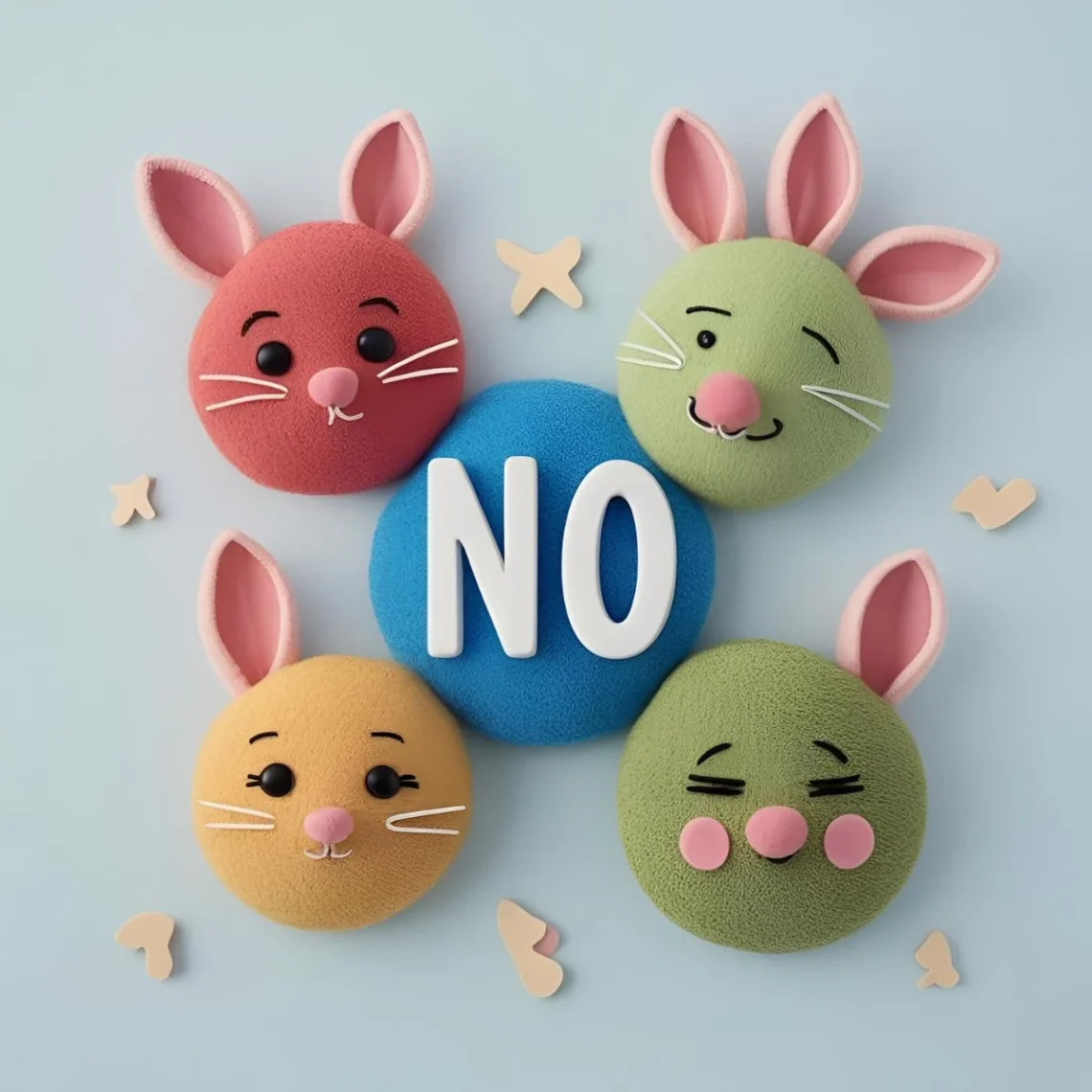The Global Pulse of “No” 💬
In a vibrant Cairo market, a shopper’s sharp “La” turns down a vendor’s offer with a smile 🙅♂️. In a serene Maori hui in New Zealand, a thoughtful “Kao” shapes a communal decision 🌿.
Across the world, the word “no” pulses with human agency—a tiny syllable that guards boundaries, asserts identity, or simply says, “Not now.”
From the crisp “Nein” of a Berlin boardroom to the melodic “‘A‘ole” of a Hawaiian beach, “no” unites us in its universal purpose while shining through the prism of cultural diversity.
Join us on a journey to discover how this powerful word resonates across languages and traditions, reflecting both our shared humanity and unique cultural melodies. Let’s explore! 🚀
Reference Table: “No” Across Languages 📊
| Language | Word for “No” | Cultural/Linguistic Insight |
|---|---|---|
| French | Non | Often paired with “merci” for politeness, reflecting France’s diplomatic charm 🇫🇷. |
| Spanish | No | Ranges from casual to fiery, amplified by gestures in Spain’s passionate culture 🇪🇸. |
| German | Nein | Crisp in formal settings, softer in casual ones, mirroring German precision 🇩🇪. |
| Italian | No | Theatrical, with hand waves, rooted in Italy’s expressive traditions 🇮🇹. |
| Mandarin | Bù | Tone-sensitive; softened to preserve harmony in China’s social fabric 🇨🇳. |
| Hindi | Nahin | Gentle, often with a head tilt, reflecting India’s respect for harmony 🇮🇳. |
| Japanese | Iie | Rarely direct to maintain group harmony, common in Japan’s polite exchanges 🇯🇵. |
| Korean | Aniyo | Polite, used respectfully in Korea’s hierarchical society 🇰🇷. |
| Arabic | La | Varies from soft to emphatic across 22 countries, e.g., Egypt’s lively tone 🇪🇬. |
| Swahili | Hapana | Warm, communal, often explained in East Africa’s social settings 🌍. |
| Zulu | Cha | Short, strong, reflecting Zulu directness in South Africa 🇿🇦. |
| Yoruba | Kò | Respectful, paired with gestures to honor elders in Nigeria’s markets 🇳🇬. |
| Maori | Kao | Thoughtful, tied to communal decisions in New Zealand’s Maori culture 🪶. |
| Hawaiian | ‘A‘ole | Gentle, reflecting Hawaii’s aloha spirit and nature connection 🌺. |
| Cherokee | Tla | Woven into storytelling to teach boundaries in Native American communities 🦅. |
European Languages: A Chorus of Refusal 🎶
Europe’s linguistic diversity shapes “no” in unique ways. In France, “Non” shifts from a polite “Non, merci” at a Paris café to a firm stance in debates, reflecting a culture that blends diplomacy with conviction 🇫🇷. Spain’s “No” is vibrant, from a casual shrug in Barcelona to a passionate “¡No!” at a Seville flamenco show, often with expressive hand gestures 🇪🇸. In Germany, “Nein” is crisp in formal settings like Munich offices but softens among friends, balancing precision with warmth 🇩🇪. Italy’s “No” is a performance, paired with dramatic waves in Rome’s bustling piazzas, rooted in expressive traditions 🇮🇹. Russian “Nyet” carries decisive weight, as in Moscow’s direct negotiations, reflecting a culture of clarity 🇷🇺. Across Portugal (“Não”), Netherlands (“Nee”), Sweden (“Nej”), Poland (“Nie”), Greece (“Óchi”), Romania (“Nu”), Hungary (“Nem”), Finland (“Ei”), Norway (“Nei”), Denmark (“Nej”), Belgium (“Nee/Non”), Austria (“Nein”), Switzerland (“Nein/Non/Na”), Czech Republic (“Ne”), Slovakia (“Nie”), Croatia (“Ne”), Serbia (“Ne”), Ireland (“Ní”), Ukraine (“Ni”), and Bosnia (“Ne”), “no” reflects local values—politeness, passion, or precision—united by the act of setting boundaries.
Asian Languages: Harmony in Diversity 🏮
Asia’s vast linguistic landscape crafts “no” with nuance across over 20 countries. In China, Mandarin’s “Bù” is tone-sensitive—a misstep could change its meaning! It’s softened with explanations in Beijing’s markets to preserve harmony 🇨🇳. Hindi’s “Nahin” in India, Fiji, and Nepal is gentle, often with a head tilt, reflecting respect for social bonds, as seen in Delhi’s bazaars 🇮🇳. Japanese “Iie” in Japan avoids direct confrontation, cushioned with phrases in Tokyo’s polite exchanges to maintain group harmony 🇯🇵. Korean “Aniyo” in South Korea and North Korea is respectful, used in Seoul’s hierarchical settings 🇰🇷. Arabic’s “La” spans 22 countries—Egypt, Saudi Arabia, Morocco, Algeria, Iraq, Syria, Jordan, Lebanon, UAE, Qatar, Kuwait, Oman, Yemen, Bahrain, Libya, Tunisia, Sudan, Palestine, Mauritania, Somalia, Djibouti, and Comoros—with tones from Egypt’s lively cadence to Morocco’s softer delivery 🇪🇬🇲🇦. Other languages like Thai (“Mai” in Thailand), Vietnamese (“Không” in Vietnam), Malay (“Tidak” in Malaysia), Tagalog (“Hindi” in Philippines), and Tamil (“Illai” in Sri Lanka) blend directness with cultural sensitivity, showcasing Asia’s balance of assertiveness and respect.
African Languages: Strength and Community 🌍
Africa’s rich languages express “no” with vibrancy across over 20 countries. Swahili’s “Hapana” is warm, used in Kenya, Tanzania, Uganda, Rwanda, Burundi, DR Congo, Mozambique, and Malawi, often with explanations to maintain community ties, as in Nairobi’s markets 🌴. Zulu’s “Cha” in South Africa is bold, reflecting directness in Durban’s streets 🇿🇦. Yoruba’s “Kò” in Nigeria and Benin is respectful, paired with gestures like bowing to elders in Lagos 🇳🇬. Amharic’s “Aydellem” in Ethiopia is soft, aligning with communal harmony, while Hausa’s “A’a” in Nigeria and Niger is firm yet polite. Other languages include Shona (“Mhanza” in Zimbabwe), Xhosa (“Hayi” in South Africa), Tswana (“Nnyaa” in Botswana), Oromo (“Lakki” in Ethiopia), Somali (“Maya” in Somalia), Tigrinya (“Ay” in Eritrea), Wolof (“Dèet” in Senegal), Fula (“A’a” in Guinea), Akan (“Daabi” in Ghana), Luganda (“Nedda” in Uganda), Kinyarwanda (“Oya” in Rwanda), Malagasy (“Tsia” in Madagascar), Bemba (“Awe” in Zambia), Lingala (“Te” in DR Congo), Twi (“Daabi” in Ghana), Chewa (“Ayi” in Malawi), and Sotho (“Che” in Lesotho). “No” in Africa balances strength with community, reflecting deep social roots.
Indigenous & Island Languages: Roots and Respect 🌺
Indigenous and island languages weave “no” into cultural tapestries across over 20 regions. Maori’s “Kao” in New Zealand is deliberate, used in hui to prioritize communal well-being, as in Rotorua gatherings 🪶. Hawaiian’s “‘A‘ole” in Hawaii (USA) is soft, echoing the aloha spirit on Oahu’s shores 🌴. Cherokee’s “Tla” in United States communities, like Oklahoma, teaches boundaries through storytelling 🦅. Samoan’s “Leai” in Samoa and American Samoa reflects respect in village councils. Other languages include Guarani’s “Nahániri” in Paraguay, Quechua’s “Mana” in Peru, Bolivia, and Ecuador, Inuktitut’s “Aakka” in Canada, Yolngu’s “Ngana” in Australia, Tongan’s “‘Ikai” in Tonga, Fijian’s “Sega” in Fiji, Chamorro’s “Ahe’” in Guam, Tahitian’s “‘Aita” in French Polynesia, Marshallese’s “Jab” in Marshall Islands, Palauan’s “Ng diak” in Palau, Nauruan’s “Eko” in Nauru, Niuean’s “Nakai” in Niue, Cook Islands Maori’s “Kare” in Cook Islands, Yapese’s “Ba’” in Micronesia, Kosraean’s “Kuh” in Micronesia, Pohnpeian’s “Pwuhk” in Micronesia, Chuukese’s “Awpw” in Micronesia, and Iban’s “Enda” in Malaysia. These languages use “no” to harmonize individual choice with collective values, rooted in tradition.
Cultural Insights: The Timeless Power of “No” 🕰️
“No” has deep roots. Latin’s “non” seeded Romance languages, spreading via Roman trade 📜. In Chinese, “Bù” appears in oracle bone scripts (1200 BCE), where tone defined intent 🇨🇳. Swahili’s “Hapana” reflects Bantu oral traditions, tying refusal to community consensus 🌍. In Arabic, “La” echoes the Islamic declaration “La ilaha illallah,” blending negation with faith 🕌. Cherokee’s “Tla” appears in creation stories, teaching limits 🦅. Colonialism shaped “no” in languages like Quechua’s “Mana,” a symbol of resistance in Peru, or Maori’s “Kao,” preserving autonomy in New Zealand. Today, urban shifts—Japanese youth using “Iie” more directly or global slang like “Nope”—show “no” evolving. It remains a tool for survival, identity, and resistance across history.
Proverbs and Sayings About “No” 🗣️
- Spanish (Spain): “No por mucho madrugar amanece más temprano.” (No matter how early you rise, dawn doesn’t come sooner.) – Patience over force 🇪🇸.
- Japanese (Japan): “Iie to iu koto wa, kokoro no heiwa o mamoru.” (Saying no protects the heart’s peace.) – Boundaries for harmony 🇯🇵.
- Yoruba (Nigeria): “Kò s’eni ti o le fi agbara mu omi.” (No one can force water to flow.) – Coercion’s futility 🇳🇬.
- Maori (New Zealand): “Kao ki te mea kaore he take.” (Say no when there’s no reason to say yes.) – Thoughtful refusal 🪶.
- Arabic (Egypt): “La yujbar al-qalb ‘ala al-hubb.” (No one can force the heart to love.) – Emotional boundaries 🇪🇬.
- Swahili (Kenya): “Hapana ni nguzo ya maamuzi.” (No is the pillar of decisions.) – Agency’s strength 🌍.
- Hawaiian (Hawaii): “‘A‘ole e hiki ke koi i ka makani.” (No one can force the wind.) – Nature’s will 🌺.
- Zulu (South Africa): “Cha, uma kukhona ukuthula.” (Say no when there is peace.) – Calm assertion 🇿🇦.
- Cherokee (USA): “Tla, for the path must be chosen wisely.” – Refusal as wisdom 🦅.
- Hindi (India): “Nahin bolna dil ka darwaza kholna hai.” (Saying no opens the heart’s door.) – Empowerment 🇮🇳.
- Amharic (Ethiopia): “Aydellem, for the heart knows its truth.” – Inner conviction 🇪🇹.
- Guarani (Paraguay): “Nahániri, porque el alma elige su camino.” (No, because the soul chooses its path.) – Self-determination 🇵🇾.
FAQs ❓
Why does “no” sound similar in many languages?
Short, sharp sounds like “no” or “non” are phonetically efficient, and shared roots (e.g., Latin “non” for Romance languages) create similarities across regions.
What’s the oldest known usage of “no”?
Negation traces to proto-languages, with written records like Sanskrit “na” (1500 BCE) and Chinese “Bù” (1200 BCE) used to set boundaries.
How do gestures enhance “no”?
In Italy, a hand wave amplifies “No” 🇮🇹; in India, a head wobble softens “Nahin” 🇮🇳; in Nigeria, Yoruba’s “Kò” pairs with respectful bows 🇳🇬.
How has colonialism shaped “no”?
Languages like Quechua’s “Mana” in Peru or Maori’s “Kao” in New Zealand became symbols of resistance against colonial rule, preserving cultural identity 🪶.
Why is “no” avoided in some cultures?
In Japan and Korea, direct “Iie” or “Aniyo” can disrupt harmony, so indirect phrases are used to maintain respect and group cohesion 🇯🇵🇰🇷.
How does gender influence saying “no”?
In Yoruba culture, women may use “Kò” with softer gestures to align with gender norms, while in urban India, women’s “Nahin” is increasingly assertive, reflecting modern shifts.
Conclusion: The Universal Song of “No” 🌏
From the bold “Cha” of Zulu markets to the gentle “‘A‘ole” of Hawaiian shores, “no” sings a universal song of strength, choice, and identity. Each culture adds its own verse—politeness in Japan, passion in Spain, community in Swahili—yet the melody of setting boundaries binds us all. 😊 To bring this to life, explore a linguistic map online or listen to audio guides to hear “no” in its global chorus! Now, we want to hear your story: How do you say “no” in your language? Was there a moment when saying “no” felt like reclaiming your power or sparked a funny cultural mix-up? Share in the comments—maybe a time “no” set a boundary or taught you something new. Let’s celebrate this small word’s big impact together! 💬





